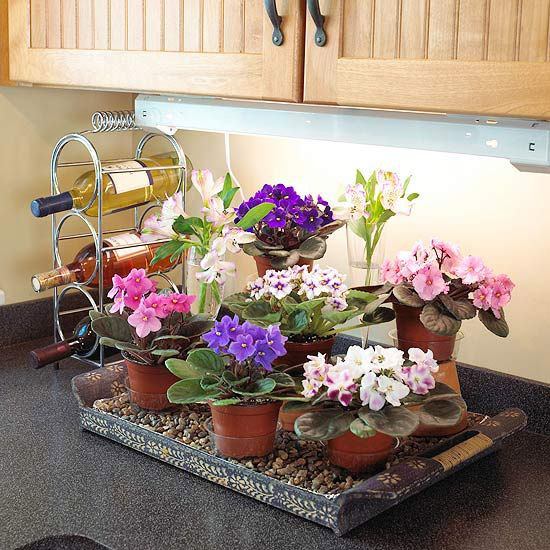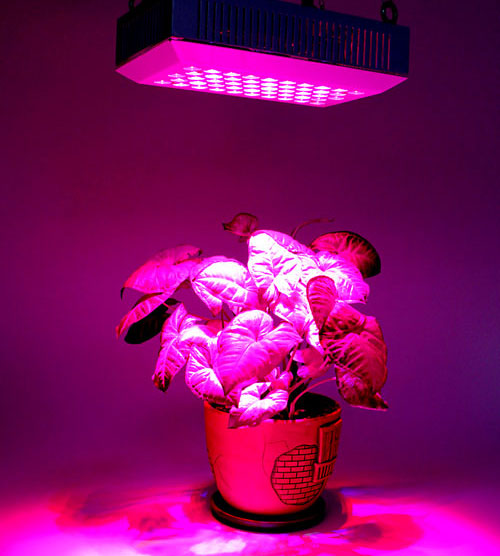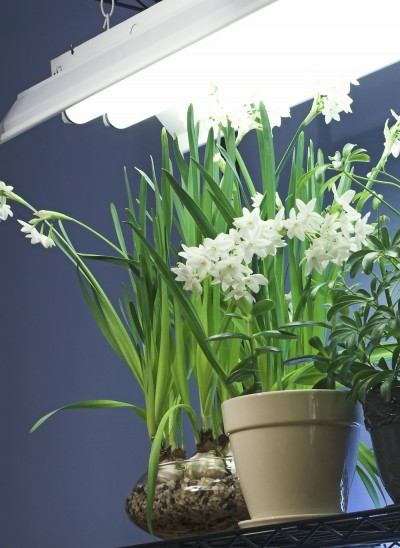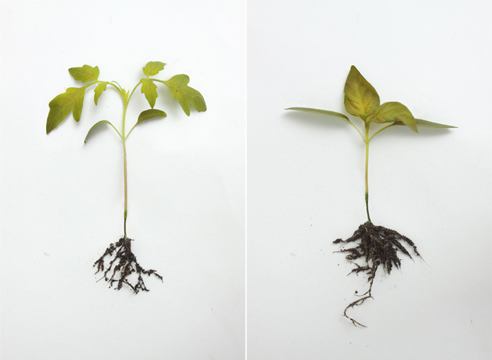Sometimes it’s necessary to artificially extend daylight hours for plants, which is where plant lighting fixtures come in. Most herbs are used to 12 hours of light a day, regardless of the season. The shorter the natural daylight outside, the longer the lamps need to be on.

Interestingly enough, our herbs might even get enough light from a chandelier with a few energy-saving bulbs.
However, not all light provides the same benefits. The blue and red parts of the spectrum, particularly red and orange, supply the energy needed for photosynthesis. Ultraviolet rays help plant tissue formation, promote growth, and increase vitamin C content. While the sun provides a full spectrum of light, in lamps, one part usually dominates.
Types of Lamps and Their Impact on Plants
Standard incandescent bulbs, still popular in households, theoretically offer a little help to plants, but they mainly provide heat and dry out the air. A chandelier 3 meters away from a windowsill emits very few of the rays needed for photosynthesis. However, I’ve noticed that after turning on the light, my dill on the windowsill tends to lean toward the chandelier, suggesting that even these bulbs have some effect.

On the other hand, fluorescent lamps are more plant-friendly. But they have their quirks—be sure to check for specific markings. Choose bulbs marked with LDC and LTBC, as their spectrum is richer and more beneficial for plants. These bulbs are readily available at most hardware stores like our local Epicenter.
Currently, energy-saving lamps are a favorite of my potted herbs, especially when placed within a meter of the plants. They don’t produce heat but provide plenty of light. Halogen bulbs, however, didn’t work well—they get hot and don’t emit much light, despite having a suitable spectrum.
There are plenty of specialized plant lamps available, but their price… For example, an LED lamp with 2 watts and a standard E27 base costs around 150 UAH (400 rubles). A longer 5-watt grow light costs 300 UAH (750 rubles). The better the quality, the higher the price.
Among Ukrainian growers, the most popular grow lights are Osram Fluora phytolamps, available in 18 and 36 watts. Their price is around 100 UAH (300 rubles). According to the manufacturer, these lamps emit light with a dominant red and blue spectrum, which stimulates photochemical processes. I’ll discuss these lamps further in the article Plant Lighting with Grow Lights.
How else can you improve the lighting of your windowsills? Clean the windows more often! Even the tiniest dust particles can scatter light, and dirty windows block a significant amount.
Every year varies in temperature and weather conditions—some are warm, others cool, rainy, or dry. But the light cycles remain constant. That’s why light is fundamental to the life cycle of plants.



